


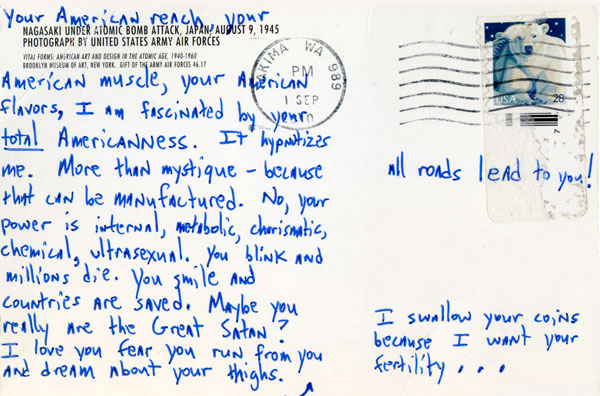
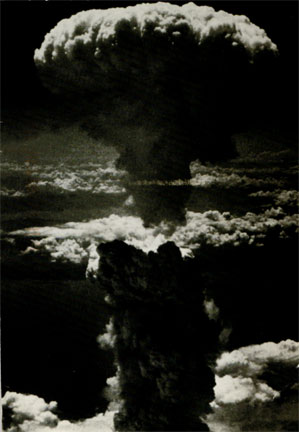
The stack is high for a cache of postcards, all received within a period of three months. All written by the same correspondent.
All making me wonder who “you” is. Sure I knew the writer, poet Arthur Tulee, when we both lived in Seattle, which, for me, was almost twenty years ago. But it's only a vague “me” he addresses. Tulee now lives in Toppenish, Washington. Diligently and with a sense of purpose and delight he has been sending his postcards poems, prose and other, since 1982, his first year at WSU, Pullman. Some of his roommates left and Tulee “wrote them little snapshots of dorm life/WSU life that they were then missing out on.” The project began casually, with insight. “I enjoyed interpreting; actual events/real people for peeps who had firsthand knowledge of the places/peeps I was writing about and didn't have to explain or describe or set up situations.” [I posed a few questions to Tulee via email.]
The limits of space served as discipline. Tulee, who is a member of the Yakima nation, a runner, an editor, oddjobsman, a brother, uncle, friend, son, tells me he realized he “could condense hours of conversation with a phrase, or collapse a context with a compact image. The shorthand I learned during those young man days stuck with me. I got older and wrote 'serious poetry' and got pieces published in serious outlets. But I also kept at the postcard writing, sometimes as writing exercises, sometimes just to develop voices. I strayed into disembodied voices, nonsense quatrains, and branched out to address other writers, pop culture icons. I also just loved to try out weird stuff on peeps who really knew me, even mailing to friends and lovers just across town. ('Weird' meaning the image/semiotics on one side, and also my writing on the blank side.)”
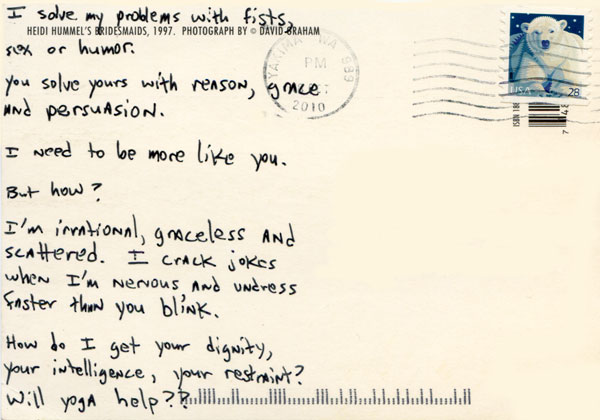
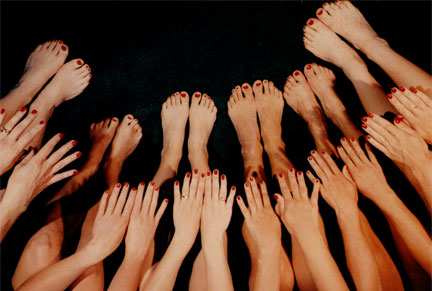
The postcard photos and illustrations reflect a good eye for art, funk, hip, vintage. “1990 was when I took it up as a mission unto itself, which was also about the time I started in on the pop culture icons.” Those icons, Warhol, Madonna, Hendrix & co. aren't the only choices.
I lift one from my stack. NAGASAKI UNDER ATOMIC BOMB ATTACK, JAPAN, AUGUST 9, 1945. Shot by the United States Air Army Forces, the photo is a full-frontal of the bomb, America’s watermark contribution to global nightmare and mere everyday household fear. As if God's prophesied wrath wasn't scary enough, we had to act it out. I flip over the black-and-white postcard. Your American reach, your American muscle, your American flavors, I am fascinated by your total Americanness.
His words are intoxicating, and, given my hypersensivity, deliciously troubling.
More than mystique — because that can be manufactured. No, your power is internal, metabolic, charismatic, chemical, ultrasexual. You blinks and millions die. You smile and countries are saved. Maybe you really are the Great Satan? I love you fear you fun from you and dream about your thighs.
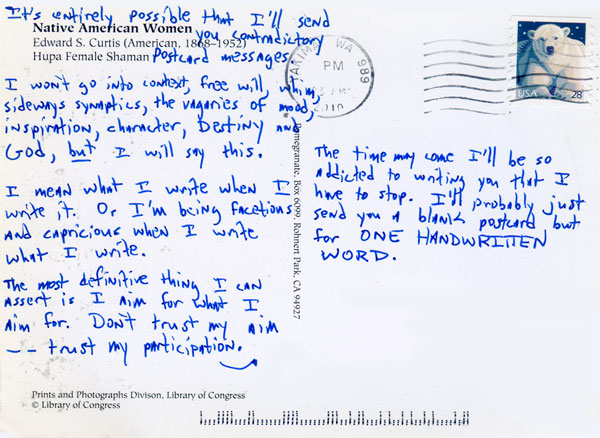
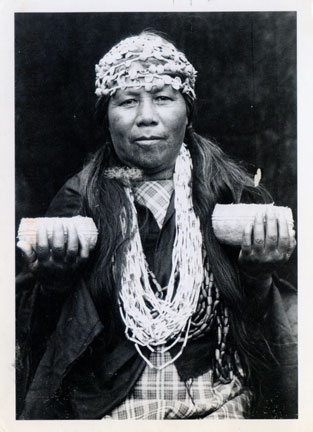
With my name as addressee, the “you” and “I” feel more personal than they do in work resting in the enclosed space of a book or journal. It's not that the message is the medium. It's that its container is exposed, has crossed America to reach me. A hand-drawn arrow directs me to the right, above my name: all roads lead to you!
In her brilliant essay, “On Sentimentality” (Madness, Rack, and Honey [Wave Books, 2012]), Mary Ruefle examines use of “you” in poems, how it is overly criticized, and how its “accusatory” nature can make detectives, rather than poem appreciators, of readers. Ruefle meets head-on a critic who likens use of you with apocyalpyse. I'm being tongue-in-cheek as is Ruefle when she writes, “Yes, it happens, but there's no cause for hysteria or even mild concern on the subject of this bacteria infiltrating and destroying vital nerve tissue in American poetry.” She cites Shelley, Keats, others, in her defense of “you” and would certainly, I suggest, appreciate, sometimes applaud, sometimes analyze its use by Tulee.
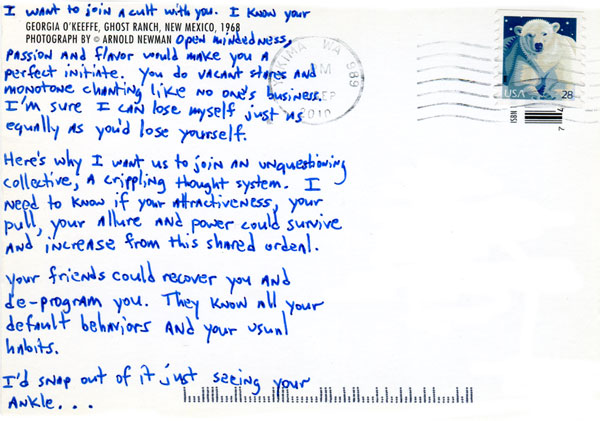
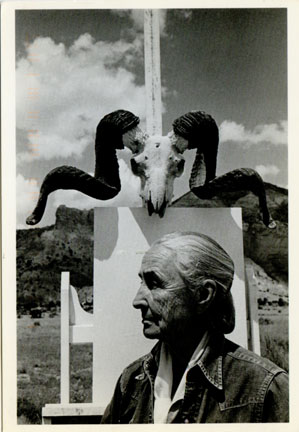
After three months and many postcards, after feeling a little exposed with all those you-s, I called for a cease-and-desist on the cards, though I held and hold onto the friendship. And hope to get some Arthur Tulee in my mailbox again someday. (I think my overly attentive postman misses the cards.) I asked him about this “you.”
“It shifts, who I am addressing. I sometimes step out of character and throw in a personal aside to specific people that I am writing to, but mostly it's like a royal 'we'/royal 'you.' An imagined version of the addressee—that works yeah. If I were better read, I would quote Neruda by phrase or idea and then you would get the feel I am addressiing Neruda. Since I am not better read, I address Superman. Or Ophelia. The people who do my dry cleaning. The carpet guys that clean movie theater carpets of gum, popcorn grease, sticky soda, etc.”
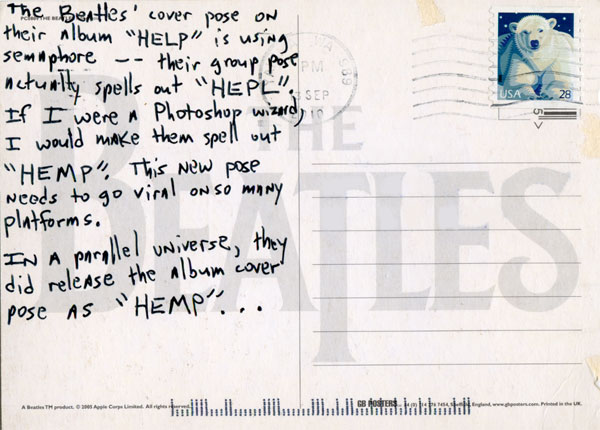
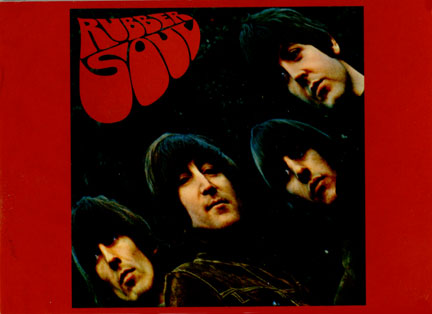
Tulee claims the postcards are easier to write than serious poetry, but contradicts that, stating “It's discipline (I can't drone on and on), I can't stray too far off topic (though I've tried), and I feel freed up by thinking of these writings as 'snapshots.'” Discipline is a tool of poets, the artist. The postcards are art and poemy.
As for his friends' responses to receiving brightly illustrated gems—not everyone he sends to is a writer—Tulee says, “I used to have actual back and forth correspondence with friends either using postcards or using letters about my postcarding. They would send me small 'Smurf' stickers and dare me to write postcards with tiny blue-skinned characters amongst my handwriting. It was interactive. Sometimes, women friends would send me heavily perfumed letters that were almost flammable sources. They wanted me to write them passionate letters, overwrought and overserious throwbacks to 19th Century literature. (Fun up to a point, but hard to branch out on.)”
Given that some desire to have a postcard serve as fine lace hanky, want to drop the hanky so gentleman poet Tulee can whisk it off the ground and return it to a damsel, I can see why Arthur has developed a persona serving art more than connection.
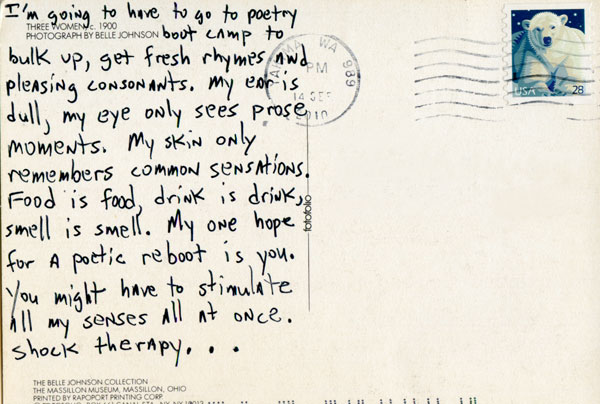
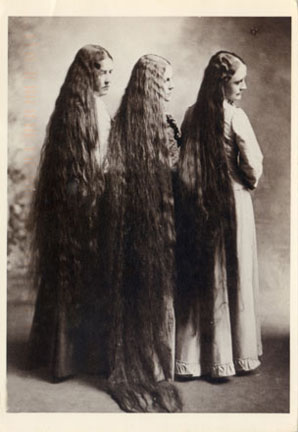
“I think my using disembodied voices and 2nd person POV derail that 2-way connection.” And as far as friend appreciation in general, it sounds like the lot of most poets. Loved or accepted but not necessarily understood. “Most people who get my postcards eventually have to tell me 'We love em. Don't always 'get' em, but we like the energy we get from them. Keep em coming!' Every so often, my quality control spikes and I actually send out good little pieces. Or aphorisms that want to belong somewhere else.”
So, whether or not Art Tulee is talking to me, Sarah Sarai, or talking to a generalized attentive reader, he is doing what many artists long to do—disburse their work—and doing so with intensity and wit.
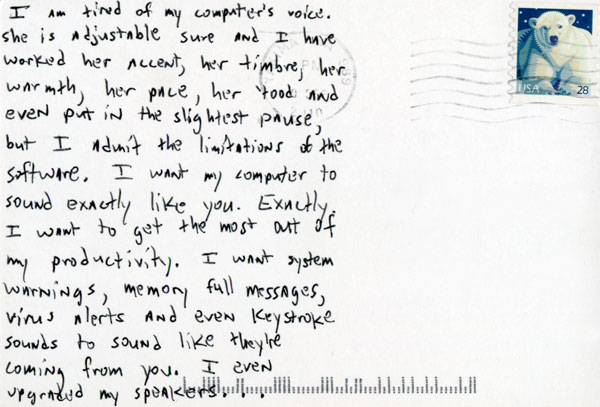
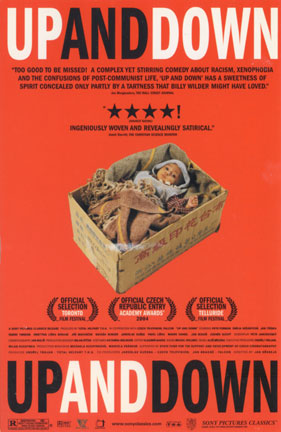
Sarah Sarai is a contributing editor at The Writing Disorder.
ISSUE:
S P R I N G
2013
SUPPORT THE ARTS
DONATE TODAY
GET A FREE T-SHIRT!
By accessing this site, you accept these Terms and Conditions.
Copyright © 2010-2013 TheWritingDisorder.com ™ — All rights reserved